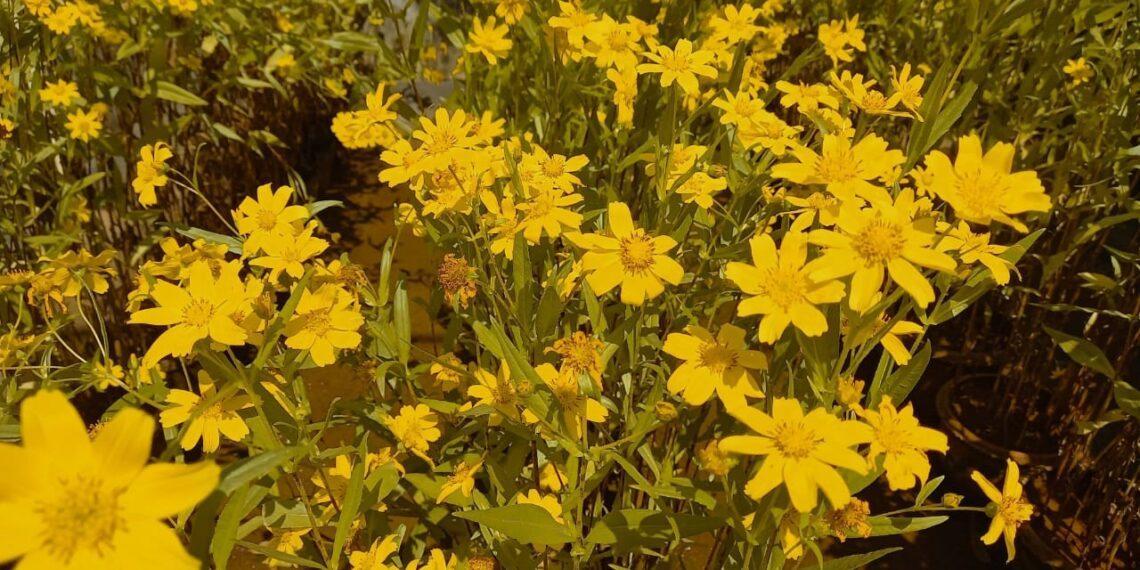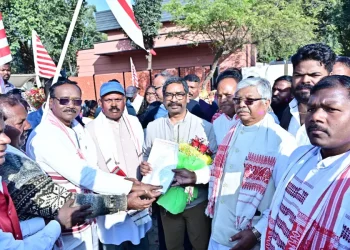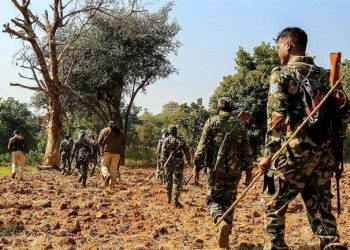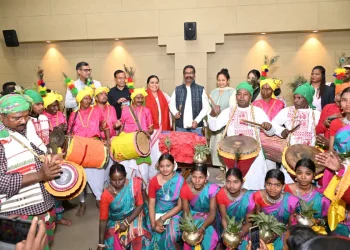Bhubaneswar
Gadaba tribal farmer Hari Tatapadia (35) of Dumbriguda village in Koraput district of Odisha ties and clubs five bullocks by the neck with thick rope of jute. He then shoos and yelps at them, while lashing them with a bamboo stick. Whipped, whooped at and led by their master, the animals on the hoof move around, exerting pressure on the thick layer of Alsi (Niger) stalks spread out in the khala (backyard) of his hut. This desi (traditional) threshing procedure, called ‘bengala’ in Odia, separates Alsi seeds (not Flax Seeds that most people call) off their stalks
When this phase is over, Hari fans Alsi spread with a large winnow of bamboo splits so that its pulverized stalks are blown away, leaving seeds for him to collect. He then sells seeds to traders at around Rs 60 per kilogram after keeping a part for its use in his field next season.
“In our hamlet Dumbriguda of 35 households, eight people do Alsi farming in nearly 15 acres that include my 1.5 acres. The yield fetches about Rs. 20, 000, which is a major portion of my erratic annual income of Rs. 50,000. The remaining Rs. 30,000 of my annual income I earn from 2.5 acres of paddy and millet land,” said Hari.
“Over 6000 farmers mostly of Parajas, Kondhs, Gadabas, Bhumias and some other tribes do Alsi farming in about 8000 hectares in more than 500 villages under blocks like Laxmipur, Pottangi, Koraput and Narayanapatna, Semiliguda and Nandapur of Koraput,” according to Sarat Kumar Patnaik, the Secretary of Koraput Farmers Association (KFA).
“Farmers grow Alsi in August-September and harvest it in November-December. It is grown when rainy season starts ending and reaped in winter. The crop is cultivated neither during the peak phase of rainy season nor during summer, as it cannot survive in excess rain and heat,” said Patnaik.
“Temperature needed for Alsi to grow ought to range between 10 Celsius and 30 Celsius, while annual rainfall should be between 700 mm and 750 mm,” he added.
Koraput district, considered to be Alsi hub of Odisha, has several indigenous varieties that are still to be identified, enlisted and christened. However, the Department of Biodiversity and Natural Science (DBNS) of the Central University of Odisha (CUO) in Sunabeda town of the district has collected 30 indigenous varieties that belong to the family of Asteraceae.
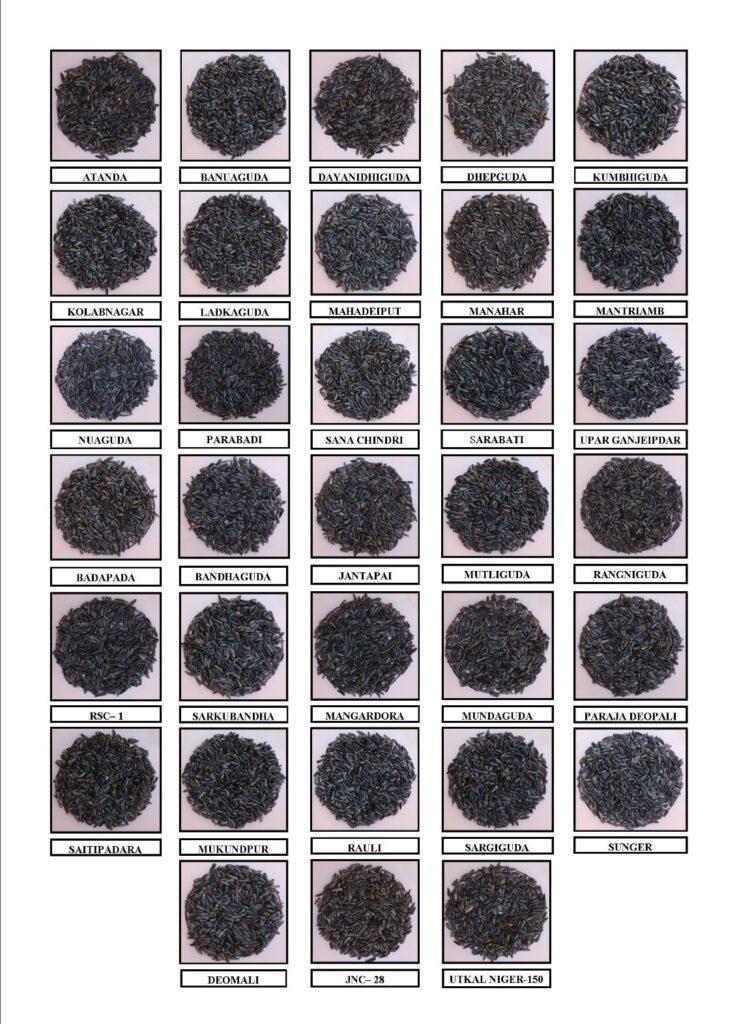
“During our ongoing study that took off in 2020, we collected 30 indigenous varieties by interacting over 120 farmers. However, there might be several others including wild ones that we will try to locate for our research,” said Dr. Debabrata Panda, the DBSN Assistant Professor.
Adding to the list of Alsi varieties, two improved varieties have been released by Bhubaneswar-based Odisha University of Agriculture and Technology (OUAT). Improved varieties Deomali and Utkal Niger of OUAT were released around 1992 and 2008 respectively.
“The third improved variety to be released by OUAT is at the proposal stage. However, we are not supposed to reveal anything about at this stage,” said senior scientist Dr. Sumanta Sahoo, the Officer In-Charge of OUAT’s All India Coordinated Niger Research Project, Sunabeda.
“Alsi, which some wrongly call flax seeds, is packed with fibre, Omega-3 fatty acid, carbohydrate, vitamin KI, Vitamin C, antioxidants magnesium, potassium, zinc, potassium and other nutrients. Even indigenous varieties like Mangardora, Ganjeipadar and Kolabnagar, exceptionally rich in flavonoid, and vitamin C, and antioxidant capacity, are nutritionally superior to improved varieties,” said Dr. Panda.
“Alsi reduces risk of heart disease, diabetes and cancer. Bad cholesterol also decreases due to its intake,” said Dr. Parsuram Sial, the Associate Director of OUAT’s Regional Research Transfer Station in Semiliguda of Koraput.
Fat content, out of which oil is extracted is higher in a number of indigenous varieties than in improved counterparts, according to the study of DBSN. For example, fat content of indigenous varieties like Sakurbanda and Saitipadar is around 41 percent and 42 percent of their respective weight, while it is Deomali and Utkal Niger is around 30 percent and 31 percent respectively, according to Dr. Panda.
“Alsi oil sells at Rs. 300 to Rs. 400 per litre, while its residue left oil extraction sells at Rs. 30 to Rs. 40 per kilogram,” said farmer Keshab Jahi of village Kolab Nagar under Koraput block. “The residue, which we call ‘pidia’, is also used as bird and cattle feed,” he added.
When Alsi has nutritional, medicinal and commercial values, its farming and marketing ought to be promoted by the government as it does for millet under its Millet Mission, according to KFA Secretary Sarat.
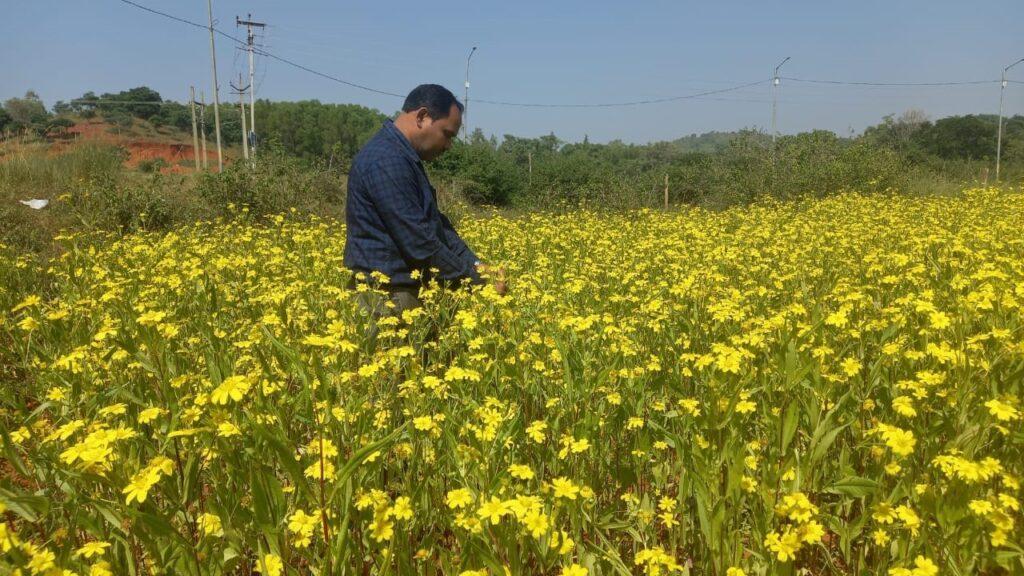
“Several times we have requested Integrated Tribal Development Agency (ITDA) of the Scheduled Tribe and Scheduled Caste Development and Backward Classes Department, Odisha Livelihood Mission (OLM) of Department of Mission Shakti Department, and Odisha Rural Development Marketing Society (ORMAS) of Panchayatraj Department to take steps in this regard, but nothing has been done apparently till now,” said Sarat.
Project Administrator of ITDA, Koraput, Somya Sarthak Mishra and Project Manager of OLM, Koraput, Priyambada Bisoi admitted that their organizations do not have any plan and project to promote farming of Alsi and its marketing till now. However, Deputy Chief Executive Officer of ORMAS, Koraput, Roshan Kartik said that his organisation has a plan for 2024 to prepare Alsi laddoo and oil from next year (2024) in cooperation with self-help groups.
“We have already taken nearly five acres of land near Marchimal to set up agri-incubation centre to prepare not only Alsi ladoo and oil, but also many other things like turmeric powder and soaps. It will be equipped with grading, packaging and oil extracting machines. For this about Rs 20 lakh out of the total budget cost of Rs. 1.5 crore has been set aside,” said Kartik.
When ORMAS plans for next year, start-up Jagannath Millet Hub (JMH) in Jeypore town of Koraput has already started experimenting with preparing and marketing Alsi ladoos, cakes and cookies.
“Last year we made five kilograms of laddoos and three kilograms of cookies out of reddish Alsi as an experiment and sold them off at Rs. 400 per kilograms. The instant success has inspired us to start their business in these products. Besides, we will also extract Alsi oil that is said to have immense nutritional and medicinal value,” said JMH Director Jagannath Chinary.











